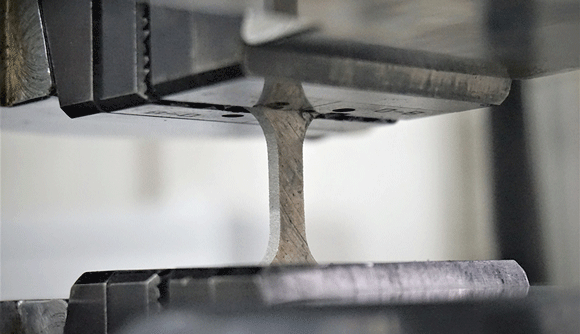Researchers could finely tune high-temperature superalloys for specific properties
April 7, 2021

Superalloys that withstand extremely high temperatures could soon be tuned even more finely for specific properties, such as mechanical strength, as a result of work undertaken at KTH Royal Institute of Technology in Stockholm, Sweden.
A phenomenon related to the invar effect – which enables magnetic materials such as nickel-iron (Ni-Fe) alloys to keep from expanding with increasing temperature – was reported to have been discovered in paramagnetic (weakly magnetised), high-temperature alloys.
Levente Vitos, Professor at KTH Royal Institute of Technology, states that the breakthrough research, which includes a general theory explaining the new invar effect, promises to advance the design of high-temperature alloys with exceptional mechanical stability. The article was published in the Proceedings of the National Academy of Sciences of the United States of America. Led by Vitos, the research team was comprised of KTH researchers Zhihua Dong, Wei Li and Stephan Schönecker.
Short for invariant, invar plasticity enables magnetically-disordered Ni-Fe alloys to show practically invariant deformation behaviour over a wide temperature range – making them ideal for turbines and other mechanical uses in extremely high temperatures.
The invar effect however has never been fully understood, and Vitos says that these new findings help explain the peculiar high-temperature properties of special alloys used in jet engines, such as nickel-base superalloys.
Invar has two known effects: thermal expansion and elasticity (the ability to spring back after bending, for instance). Because both of these effects are linked with the interplay between temperature and magnetic order, they are considered to be specific to magnetically-ordered alloys.
Using first-principles quantum mechanical modelling, the researchers identified how invariant plasticity also occurs in non-magnetic alloys, when a structural balance exists at the atomic level between cubic and hexagonal close-packed structures.
The new discovery emerges from a long-term collaboration with industry to find alternatives to carcinogenic cobalt in hard metals, such as cutting tools. Vitos says this finding broadens the palette of invar phenomena and material compositions, with clear implications for new applications.
“Our findings create a new platform for tailoring high-temperature properties of technologically relevant materials towards plastic stability at elevated temperatures,” added Vitos.
The research was supported by the Swedish Research Council (VR), the Swedish Foundation for Strategic Research (SSF), and the Swedish Foundation for International Cooperation in Research and Higher Education (STINT).














